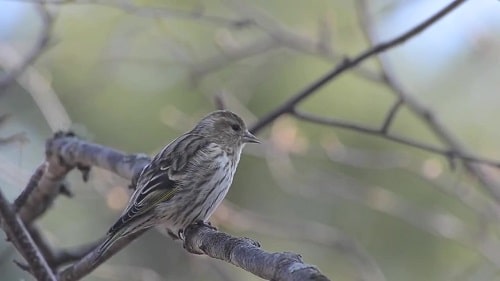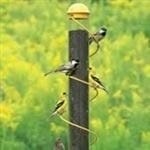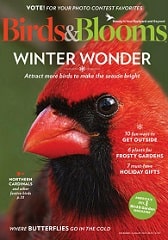Pine Siskin Mating, Nesting, and Feeding Habits
Moving around in response to available food supplies, the Pine Siskin may or may not be seen in the same spot. In the East and Midwest, you may have many of these birds at your feeder one year and quite possibly none the next.
Description
Similar to the goldfinch in appearance and song, these birds measure about 4 1/2 to 5 1/2 inches in length. Brown-streaked above and lightly streaked underparts.

Wings and tail have yellow patches. Some are more heavily streaked with less yellow on the wings.
Pine Siskin Call
Mating Habits
The courtship of this bird begins in January and February. Still in winter flocks, the birds begin to seek mates.
One aspect of their courtship is mate-feeding. This behavior consist of the male taking food in his bill, flying to the female, and giving it to her.
Another mating habit is a flight display by the male.
Leaving his perch close to a female, the male flies up in circles with tail spread and a rapid fluttering flight, singing non-stop.
When he stops circling he drops down to perch near the female. He may repeat this flight display several times.
Nesting Habits
The nesting habits of these birds as it pertains to locality are irregular.
Where they nest is dependent on whether they find an abundant food supply. If food is plentiful they will remain, if food is scarce they will move on.
| Pine Siskin Nesting Stats | |
|---|---|
| Eggs | 1 - 5 |
| Incubation | 13 days |
| Nestling Phase | 13- 17 days |
| Broods | 1 - 2 |
The nest is made of grasses, twigs, rootlets, bark strips, and lichens lined with feathers, fur, and rootlets.
Placed in a tree branch (usually a conifer) 3 to 50 feet above the ground.
The female lays 1 - 5 light green-blue eggs with dark marks. The female will incubate the eggs for 13 days.
The young will leave the nest about 13 to 17 days after hatching.
Feeding Habits - What Pine Siskin Eat
The natural diet of this bird consist primarily of seeds. Favorites include the seeds of conifers, birches, alders, and a wide variety of weed seeds.
Some other feeding habits of this bird include gleaning aphids off tree leaves. Aphids cause problems in the backyard vegetable and flower garden so they're a good bird to have around.
At the feeder, Pine Siskins are attracted to hulled sunflower or nyjer seed. Hanging tube type feeders used for attracting finches and chickadees will attract these birds also.








